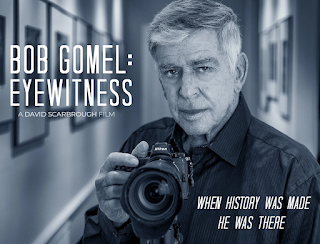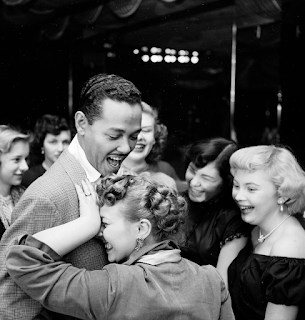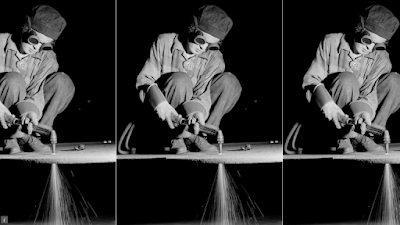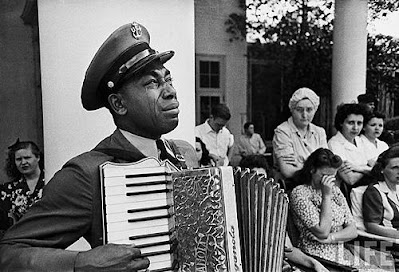Via Blind
By Miss Rosen
March 17, 2021
A new exhibition looks at rare color photographs of documentary photographer Ida Wyman made on the streets of New York in the 1940s.
American photographer
Ida Wyman (1926–2019) achieved her every dream except one — the opportunity to publish her illustrated memoir Girl Photographer: From the Bronx to Hollywood and Back before she died. Though Wyman was humble, she never lacked for confidence or nerve, becoming one of the few women photographers working for Look and Life magazines in the 1940s.
Park Avenue Archway, East Harlem, NY 1947
© Ida Wyman / Courtesy Monroe Gallery of Photography
As with many things, Wyman was ahead of the times. “She never wanted to be the most famous,” says Heather Garrison, her granddaughter and executor of the Ida Wyman Estate. “I think in her later years she finally understood how important her journey was as a woman in a male dominated industry. She took meticulous notes and records, and had her archive well organized. She wanted to put it all into one piece.”
Despite the fact Wyman did not live to see her book published, her work is receiving its proper due in the new exhibition in Santa Fe,
Ida Wyman: East Harlem, New York, 1947 in Color, which showcases a recently discovered collection of Ektachtomes Wyman made at the age of 21. The only color body of work from the period, Wyman’s photographs offer a poignant portrait of working class life in New York after the war. Neither activist nor ethnologist, Wyman was a humanist with a profound love for street portraiture. She eschewed the term “street photography,” seeing it as an anachronistic term to describe the documentation of urban life.
Street scene in East Harlem, NY 1947
© Ida Wyman / Courtesy Monroe Gallery of Photography
A Magical Process
Born to Askenazi Jews who immigrated to the United States, Wyman was born in Malden, Massachusetts, and raised in the Bronx, where her family ran a small grocery store. “Ida was very practical and frugal, and a lot of that came out of necessity, how her parents raised her, and the era she grew up in,” Garrison says of Wyman’s childhood throughout the Great Depression. “She had a lust for life, and found that in normal, accessible ways: laughter, music, dancing, and beauty in the most ordinary things.”
The shoe shine man, East Harlem, NY 1947
© Ida Wyman / Courtesy Monroe Gallery of Photography
At the age of 14, Wyman bought a camera and immediately got to work documenting her community and joined the Walton High School Camera Club, where she learned to develop and print photographs. “[Photography] seemed like a magical process, allowing me to hold forever on film what my eyes saw and my heart felt, as I explored the various neighborhoods of New York City,” Wyman wrote in an artist statement.
Bernard Hoffman, a staff photographer at LIFE magazine, met with students of the camera club, and encouraged Wyman to pursue her dream of becoming a professional photographer. After graduating high school in 1943, Wyman took a job at age 16 as the first “girl” mailroom boy at
Acme Newspictures. After being promoted to printer, Wyman purchased a 3¼ x 4¼ Graflex Speed Camera, loaded up her film holders, and took to the street during her lunch break.
Guess your age, East Harlem, NY 1947
© Ida Wyman / Courtesy Monroe Gallery of Photography
The Keymaker, East Harlem, NY 1947
© Ida Wyman / Courtesy Monroe Gallery of Photography
After three years at Acme, Wyman came to understand her true passion was not in news photography but in making photo essays and telling stories of daily life. She created assignments for herself, crafting a body of work that she could sell to picture magazines. In 1945, Wyman sold her first story to Look. It was fortuitous timing, for that fall she lost her job at Acme after the company dismissed her in order to give her position to a returning military veteran.
“Photography has enabled me to understand the lives of others, lives different in experience and age from my own.”
A League of Her Own
In 1946 Wyman married Acme staff photographer Simon Nathan, who introduced her to
Morris Engel, a member of the illustrious New York
Photo League. “I considered myself a documentary photographer, and the League’s philosophy of honest photography appealed to me,” Wyman wrote in Girl Photographer. “I also began to understand the power of photographs to help improve the social order by showing the conditions under which many people lived and worked. Even after leaving the League the following year, I continued to emphasize visual and social realities in my straightforward photographs.”
Stickball on St. Nicholas East Harlem, NY 1947
© Ida Wyman / Courtesy Monroe Gallery of Photography
Wyman’s photographs in East Harlem are a testament to a shared vision of photography as a tool to amplify the political, economic, and social issues of the times. But Wyman was not overtly political with her work; she sought to tell a story without using it as a cudgel. Her vibrant color photographs of working class life are empathetic but devoid of a moralizing tone; she sees her subject as equals worthy of veneration as individuals, rather than objects to serve a larger agenda.
“Everyday life and where it was happening was what interested me,” Wyman said in her artist statement. “Taking pictures enabled me to hear the stories of the people I photographed, which satisfied an immense curiosity to learn and understand the lives of others, lives different in experience and age from my own.”
Man with guitar, East Harlem, 1947
© Ida Wyman / Courtesy Monroe Gallery of Photography
Bobby Soxer Makes Good
Although Wyman could be shy, the camera afforded her the ability to engage with people and connect, creating a space for mutual recognition. Her photographs are imbued with tenderness and intimacy, in no small part due to the fact that she sought to obtain her subjects’ consent before making the photograph.
“She would introduce herself and ask permission,” Garrison says. “She was able to connect with people and put them at ease. Even though the photograph was candid and unposed, she was never trying to surprise them or grab the shot. Connecting with people brought her a lot of joy.”
Man on Fire Hydrant, East Harlem, NY 1947
© Ida Wyman / Courtesy Monroe Gallery of Photography
The stringless Banjo, East Harlem, NY 1947
© Ida Wyman / Courtesy Monroe Gallery of Photography
As one of the few professional women photographers working at the time, Wyman could move through the streets openly without catching people off guard; that they may have underestimated her worked to her advantage every time. Garrison explains, “She was a girl in bobby socks taking pictures and I think people were endeared to that. They would relax because it was a girl taking pictures — no big deal, no stress, no high stakes. She got better photos because people were at ease and not putting on airs for the photograph.”
By Miss RosenMiss Rosen is a New York-based writer focusing on art, photography, and culture. Her work has been published in books, magazines, and websites including Time, Vogue, Artsy, Aperture, Dazed, and Vice, among others.
Ida Wyman: East Harlem, New York, 1947 in Color
Through April 11, 2011
Monroe Gallery, 112 Don Gaspar, Santa Fe, NM 87501, USA
https://www.monroegallery.com/




















